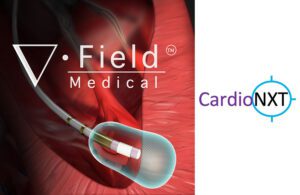 Field Medical and CardioNXT announced a strategic collaboration to provide what they say is a first-of-its-kind pulsed-field ablation (PFA) therapy.
Field Medical and CardioNXT announced a strategic collaboration to provide what they say is a first-of-its-kind pulsed-field ablation (PFA) therapy.
The two companies plan to provide a purpose-built PFA therapy integrated with 3D mapping and navigation.
According to a news release, both teams bring decades of experience in pioneering novel PFA and navigation technologies. Their experiences range across various medical applications.
“PFA has generated much excitement in the treatment of atrial fibrillation due to an improved safety profile and procedural workflow. However, most of the first-generation PFA technologies today are repurposed from other applications and suffer from significant limitations outside a subset of AFib procedures,” said Dr. Steven Mickelsen, CEO of Field Medical. “This collaboration brings together second-generation focal PFA and AI-based cardiac mapping—a combination set to revolutionize catheter ablation across the full spectrum of treatable arrhythmias.”
Mickelson brings a wealth of experience to the collaboration, having founded Farapulse in 2012. Boston Scientific acquired Farapulse and its PFA technology for nearly $300 million last year.
The companies expect their partnership to accelerate the development of novel integrated solutions. Those solutions aim to improve safety and efficacy while minimizing the need or X-rays in cardiac catheter ablation.
According to the companies, accurate navigation represents a “critical” aspect of heart rhythm treatment. That rings especially true outside the atria, where magnetic localization can improve positioning when treating ventricular tachycardia.
“We are excited to collaborate with Field Medical to build a purpose-built system from the ground up that incorporates PFA, contact force sensing, electromagnetic localization, and AI-enabled mapping capabilities,” said Jerome Edwards, CEO, CardioNXT. “We believe this will create a first-of-its-kind completely integrated total solution to identify sources of cardiac arrhythmias and deliver therapy to those targets more efficaciously than ever before.”